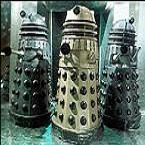Wilhammer
Posts: 449
Joined: 5/24/2002
From: Out in the Sticks of Rockingham County, North Caro
Status: offline

|
I guess this boils down to the oldest argument in wargaming;
The Grog Debates.
I play in a style based on historical knowledge and many, many nights of playing naval campaigns in the Pacific where we did everything in "real time", we broke time up, moved planes and ships in 30 minute phases on maps covered in plastic using grease pencils, matched the overlays, used a judge to track potential intercepts, and then fought detailed engagemnts in one minute turns on a beautiful 16 ft X 16 ft blue table.
Of course, I was a teenager to young man, and had about 6 guys I could always count on to play, and a retired Naval CPO who introduced it to us and indoctrinated historical accuracy and "groginess" in us.
I was a bit mystified in that historical tactics did not quite work in UV.
Why did the Tokyo Raid get launched early?
Hmmm, a gamey carrier Rush on a Japanese port was potentially spotted by a fishing trawler picket. This cannot happen in UV, unless the time is Midnight, 6AM or 6PM (one night search phase, and 2 daytime search phases).
Get past the surface ship argument.
Carriers are passing each other at high speed and not intercepting each other. React to enemy mitigates that some, but Japanes Admirals don't seem to no that their airplanes have far greater ranges than American ones. They dash in too close, and the Americans dash in closer, and the lowly Devestator is a giant killer.
Make it Ignore Enemy, and they zoom past each other.
What SHOULD happen?
The search planes from my carrier should always be looking, and once something is communicated to the fleet, a moment of decision has been reached, and then time should stop, and see who spots who when, and then the airstrike planning takes place.
Too tactical for you in an Operational Level game?
In an Operational Level WW2 Pacific Warfare game, an Aircraft Carrier is every bit as important as an entire sector of a frontline in an operational level game on land in Europe.
It would be like losing Bastogne in a Bulge game, and you get into the details of waging the battle around that in PzC Bulge '44.
It is not that many units we are talking about.
A potential intercept routine need only compare hexes traveled to rate of speed by overlaying all paths and comparing crossed areas to determine if they could of been in the same place at the same time. I use to do this with a Master Plot Comaprison Map, two opposing Plot Maps, platis overlays and grease pencils.
If a potential intercept is determined, the game then does a random check to see if one does take place, then the time stops at that point and executes that action. The units involved suffer Operational Point Loss, the turn proceeds.
This "overlay over overlay" check is done once at the beginning of each phase, and the game stops at each battle that got generated, thus no need to process in real time.
A turn based game with opportunity "fire".
What of "following the sounds of battle"?
That is React To Enemy Plus.
================================
Going on vacation now, be back next week.
Hope the patch is out when I get back, I still enjoy this game a bunch. I just would like to see it get better.
They seem to have so much detail in the units (down to commander and pilot level!), detailed units, but the crucial component of time and spotting is out of skew in its abstraction.
When you get right down too it, though both sides planned naval actions, the actual point of encounter was a meeting engagement.
As it is now, it feels a lot like seige warfare at times, circa 1756.
|
 Printable Version
Printable Version












 New Messages
New Messages No New Messages
No New Messages Hot Topic w/ New Messages
Hot Topic w/ New Messages Hot Topic w/o New Messages
Hot Topic w/o New Messages Locked w/ New Messages
Locked w/ New Messages Locked w/o New Messages
Locked w/o New Messages Post New Thread
Post New Thread